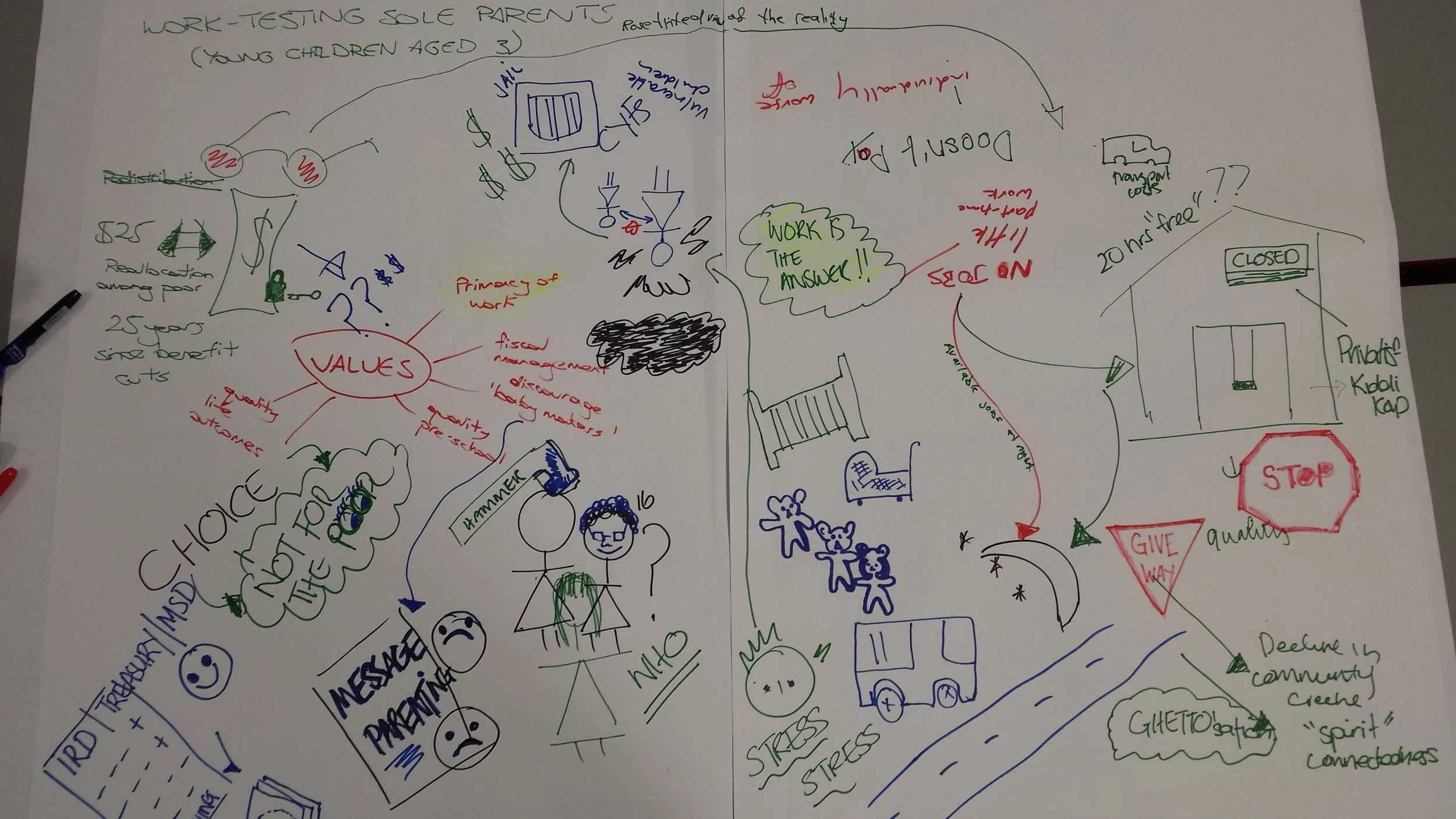Rich thinking on rich pictures
I had the good fortune recently to take part in a two day workshop on systems thinking in evaluation, led by Bob Williams. Bob is a New Zealand-based evaluator, and one of the leading proponents of systems thinking internationally. In just the last year he received the prestigious AEA Lazarsfeld Award for evaluation theory.
It was an immensely engaging set of discussions, where we looked at some core systems concepts in evaluation:
- Considering the inter-relationships between players in a system
- Engaging with the perspectives that allow us to see the world through other people’s eyes
- Reflecting on the boundaries of the system that we have consciously or unconsciously drawn, and who may benefit or be marginalised by these choices.
One part of the workshop focused on the development of rich pictures, which can be used to collaboratively develop a holistic sense of the situation one is engaging with. Rich pictures are grounded in soft systems theory and provide a way for stakeholders to define the problem as they each see it, and to reveal the different perspectives and inter-relationships on an issue.
For evaluators, they can be helpful in working with clients to understand the scope of the issue, and to challenge stakeholders to see the issue through different perspectives. These in turn can inform the problem definition and criteria selection for the evaluation.
Our group developed a rich picture of the recent budget decision that will require sole parents to seek work when their youngest child turns three years of age. Pictured below, the many holders of pens at the table set out different considerations and perspectives on the issue, including the fiscal and political drivers; the trade-offs involved; the potential impacts of the decision (such as on both employment and family attachment); and the underlying values that are at play.
Reflecting afterwards on our own rich picture, we noted that many of us took a pen at the same time and quickly drew our perspectives on the problem. This rapidly filled the page, but we may have been better to have only one pen and take it in turns to draw and explain each other’s perspectives; or to have a round table discussion to start with, so that the picture that emerged could have a greater sense of the whole than of disparate individual stories.
But more positively, we all could see the value of using rich pictures as a tool in the design stages of evaluation, and gratified that rich pictures don’t require great artistry. They also enabled us to see the boundaries we had drawn on the issue and our own values that we brought to the discussion.
Judy Oakden of Kinnect has published a great presentation on rich pictures, and a range of systems-oriented diagramming resources, including rich pictures are available through the Open University website.

